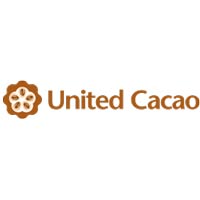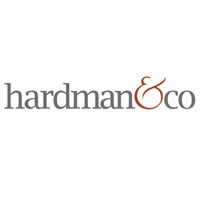United Cacao Ltd SEZC (LON:CHOC) Chief Executive Officer Dennis Melka caught up with DirectorsTalk for an exclusive interview to discuss the current cacao market and the supply and demand of cacao products
Q1: I understand that you’re going to give us a little appraisal of the current cocoa market?
A1: Absolutely, I think what we’ve seen released out of Ghana yesterday is really that cacao production is an absolute free fall in that country. When we started the year, the projections for Ghana’s forecast of production was somewhere about 950,000 tonnes to 1,000,000 tonnes of production. What the government reported yesterday was that at best it’ll be 700,000 tonnes, potentially 690,000 so we’re talking a 30% fall in estimates in less than a 6 month period. I think it really underscores how fragile these markets are and how reliant the world is really of two sources of production, Ghana and Cote d’Ivoire. We’re also seeing very poor numbers coming out of Indonesia so it looks like that country will continue to increase its imports of cacao. Now you may recall, Indonesia used to be a cacao exporter but last year they became a net importer. When you look at the four largest producer of cacao, two of them are already net importers as of last year; Indonesia and now Brazil. This is because of the booming middle class demand for confectionary product in those large growing economies, they’re no longer exporting their cacao, they actually have to import it from West Africa so you see the whole world’s reliant on Cote d’Ivoire and Ghana and Ghana’s just reported a 30% reduction on what they thought they’d produce. I think it’s an exciting opportunity for companies like ourselves where we can create jobs and also have a production platform where that cacao is highly in demand around the world. We have been very fortunate to receive reverse enquiries for our product and we have buyers waiting for product samples so we’re moving ahead as quickly as we can. We’re very excited about the prospect of the market but it’s not easy, these are long-term projects, they require a lot of upfront capital, they require a certain type of development skill set so I think we really have our first manoeuvre advantage and we will take it advantage of that and hopefully reward investors accordingly.
Q2: Looking at a chart of the cocoa futures and they came off from a peak in September, I think around the 3400 level. They’re only just now, I think with the news you’re describing, they’re starting to pick up again. Are you expecting them to get back to the peaks of 2014?
A2: It’s very difficult to forecast markets, this is the one thing I’ve learnt in the ten years that I’ve been in a commodity producing business. I would say the dynamics look very good for the producers over the next short term and over the medium term. I met with the senior trader at one of the large global trading groups and they feel there’s a possibility that cacao could be $5,000 per tonne over the next five years. We’re in fragile markets, fragile production and the demand for confectionary continues to grow globally. Show me a chocolate company which is forecasting negative sales! Every single major confectionary group is forecasting 3-7% sales around the world. They’re investing billions on billions of dollars in their brands, in emerging markets, in South East Asia, in China, in India and in the Western markets. Demand for confectionary is really only going one way; it’s going up! There’s more humans and there’s more product push from the big manufacturers and cacao has no substitute.
Q3: Isn’t the key point that even as the price goes up, people are so addicted to the substance, they will still consume it? That’s the main hook, isn’t it?
A3: Yes. I think to put in context, how much cacao is going into a Snickers bar? The reality is probably 5% of the product value is actually the cacao, the cost of the beans so even for a higher content bar, people are estimating that it’s only 15% of the value to the consumers is actually the cacao cost. The relative component of cacao into the confectionary industry is still very small and in my humble opinion, prices could move significantly and the consumer wouldn’t even notice it, it’s a relatively small component. For example, at $3,000 per tonne, we talking about a field value of cacao of $12 billion so it’s a $12 billion market of beans being produced around the world U put on containers and shipped to confectionary companies all over the world. The sale of those confectionary products, depending on which research you read, is somewhere between $110-$150 billion of confectionary sales that are using those cocoa beans so it’s like 10% of the value of the sale product. If you look at charts going back to 1860, cacao has been trading in London since then. We are actually at one of the three lowest periods of real cacao price. So historically the commodity is cheap and there’s a lot of room for it to revert to historical means. If we look at an inflation-adjusted price going back for 30-40 years, price was about $4,000 a tonne versus the $3,000 a tonne price today so the reality is we’re sort of trading 25-30% below the historical 40 year average so I would think cacao has a lot of room to run.



